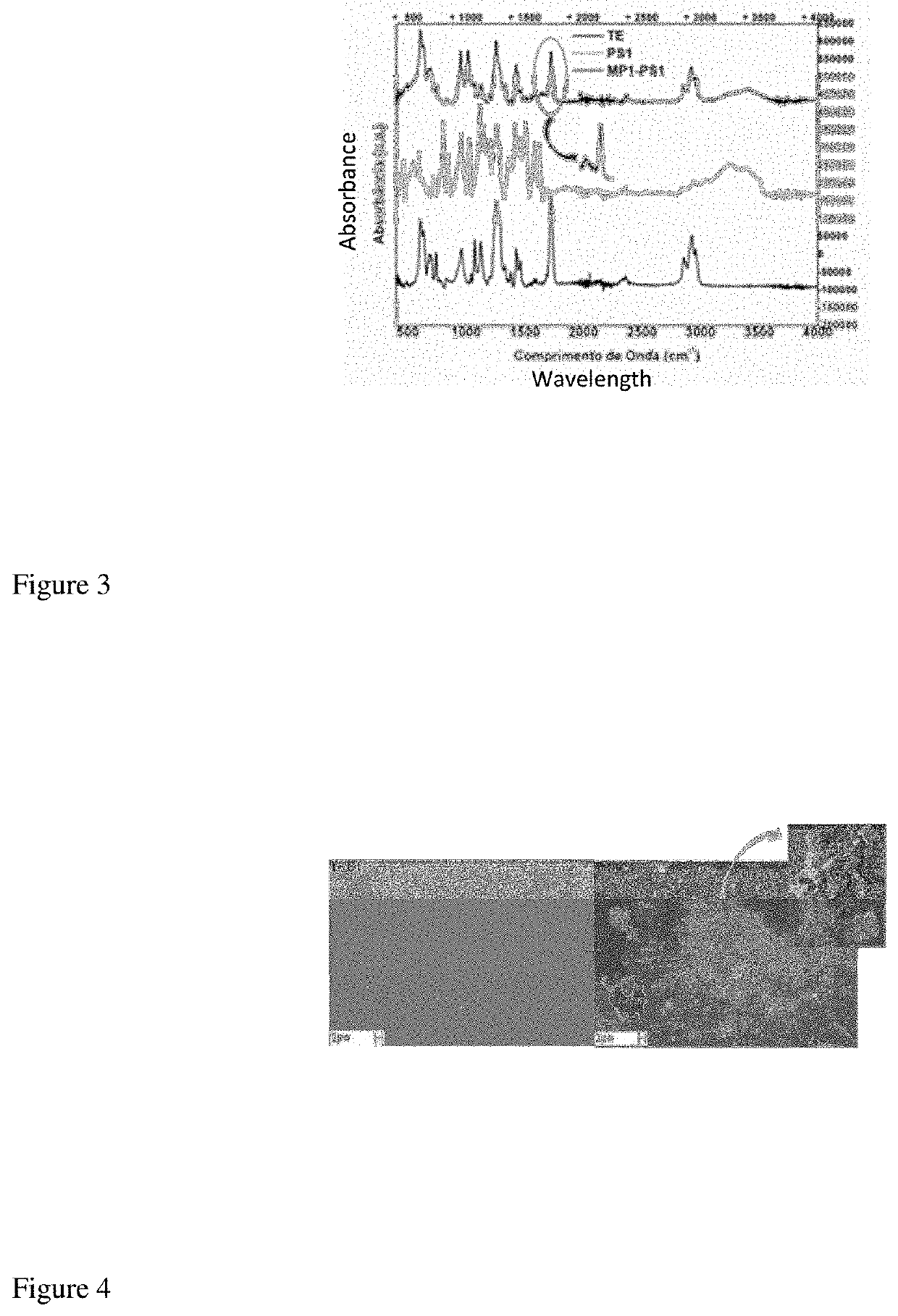Method for obtaining functionalized polymeric surfaces with photosensitizers, functionalized polymeric material and use thereof
a polymer surface and photosensitive technology, applied in the field of polymer functionalization, can solve the problems of microbial resistance development, patient death risk, and contamination in transfusions that are very serious, and achieve the effect of reducing the risk of infection
- Summary
- Abstract
- Description
- Claims
- Application Information
AI Technical Summary
Benefits of technology
Problems solved by technology
Method used
Image
Examples
example 1
Process of Preparing Polymeric Material MP1-PS1 by Covalently Attaching Curcumin (PS1) to an Endotracheal Tube (ET) Made of PVC (MP1)
[0054]Preparation of the solution designated Sol A in the present invention: dissolve curcumin (396 mg; 1.07 mmol) and Cs2CO3 (1.99 g; 6.01 mmol) in dimethylsulfoxide (DMSO; 80 mL).
[0055]Weigh the endotracheal tube (ET) (11 g) made of the polymeric material MP1 and submersion in Sol A, at 30° C. to 40° C., for 4 to 8 hours, under nitrogen or argon atmosphere;
[0056]Removal of the functionalized TE, consisting of MP1-PS1, from solution, initial washing with DMSO (four times, 20 mL) and finally with ethanol (4 to 10 times, 20 mL), until no curcumin is observed by UV-Vis.
[0057]Drying of the functionalized TE (MP1-PS1) preferably at room temperature, under vacuum, for 1 to 3 days.
[0058]Storage at room temperature, in the absence of oxygen and light.
[0059]The characterization of the curcumin functionalized TE tube (PS1) designated as MP1-PS1 material, was ca...
PUM
| Property | Measurement | Unit |
|---|---|---|
| temperature | aaaaa | aaaaa |
| temperature | aaaaa | aaaaa |
| current | aaaaa | aaaaa |
Abstract
Description
Claims
Application Information
 Login to View More
Login to View More - R&D
- Intellectual Property
- Life Sciences
- Materials
- Tech Scout
- Unparalleled Data Quality
- Higher Quality Content
- 60% Fewer Hallucinations
Browse by: Latest US Patents, China's latest patents, Technical Efficacy Thesaurus, Application Domain, Technology Topic, Popular Technical Reports.
© 2025 PatSnap. All rights reserved.Legal|Privacy policy|Modern Slavery Act Transparency Statement|Sitemap|About US| Contact US: help@patsnap.com



